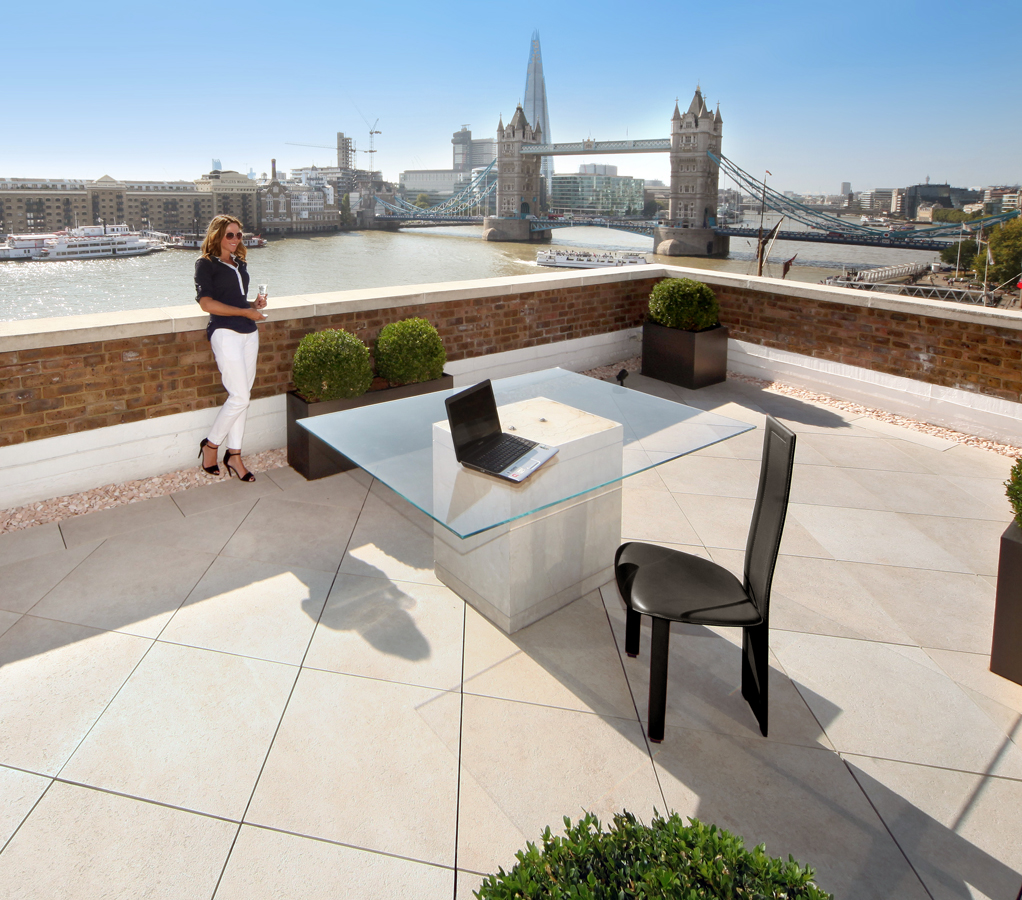
Are Porcelain Tiles Easy to Maintain?
How to choose the right porcelain paving
Porcelain tiles are becoming an increasingly popular choice for decoration both inside and outside of the home. There are several advantages in regards to porcelain when compared with other substances such as ceramic, stone or wood. However, one of the most pronounced benefits is that porcelain is extremely easy to clean and maintain. This is primarily due to the properties of the material itself. To better appreciate such a unique attribute, it is a good idea to take a look at some of the basic features that make cleaning a cinch.
Porosity
The primary reason why porcelain is so easy to clean is associated with what is known as porosity. Porosity is defined as how permeable a surface is to water, dirt and other contaminants. Substances such as wood and stone are known to have a relatively high porosity. In other words, it is easier for mould, bacteria and stains to enter and become permanently trapped below the surface. In regards to porcelain, the exact opposite is true.
Porcelain is normally cured at temperatures as high as 1,200ºC. This is very important as the process results in a much denser (and therefore less porous) finished product. Now that we have a basic concept of porosity, let us examine why this feature is co critical during the cleaning process.
More Than Skin Deep
Ground-in stains and other blemishes can be tough to eliminate from porous surfaces. In some cases, this can lead to permanent discolourations as well as other unsightly results. Porcelain will not absorb foreign matter easily. Thus, power washing and other rather invasive cleaning methods are normally not required. A bit of soap and warm water can instead be used to quickly wipe away any dirt and debris. Still, porcelain tiles within a home should be cleaned regularly to maintain their appearance as well as to help eliminate bacteria within the grout between pieces.
Less Fading
Many substances are affected by the impact of the ultraviolet rays of the sun. In the majority of these cases, colours and patterns will fade over time. There are few options to restore their original appearance short of an entire replacement. Due to the previously mentioned curing process, all shades and patterns are permanently “locked” within the surface of porcelain tiles. So, they boast a much longer lifespan in relation to materials such as stones and ceramics.
Durability
Maintenance issues will often revolve around protecting surfaces from wear, tear and scratches. This proves to be costly and still, it is virtually inevitable that damage will occur over time. On the contrary, the surfaces of porcelain are highly resilient to such instances. No sealants or coatings are required to protect them, such as the ones supplied by PrimaPorcelain. Not only does this equate to less time spent in relation to upkeep; but the longevity of porcelain is far superior when contrasted to other options.
Cleaning Intervals
Due to the ease of maintenance, it is normally not necessary to clean outdoor porcelain tiles more than a few times each year. It is wise to give them a thorough rinsing immediately after the winter months and once again before the summer. However, this will depend upon one’s region, the variations in temperature and the levels of humidity. Even in the most severe instances, a high-pressure power washer will quickly remove any detritus or dirt that has been found.
It should now be easy to appreciate why porcelain is a wonderful substance to utilise both inside and outside of the home. Boasting a low-maintenance edge, this material is just as beautiful as it is extremely functional.



